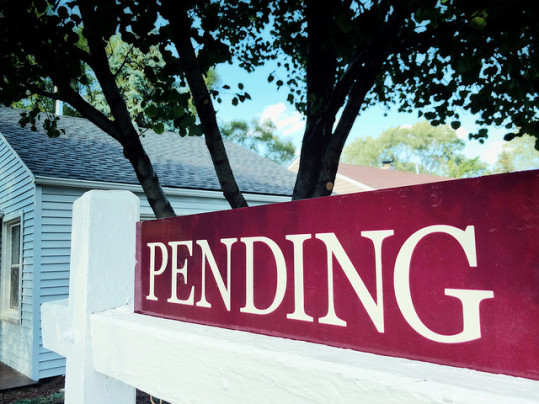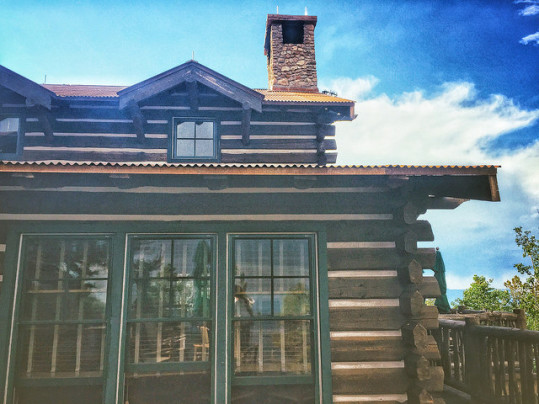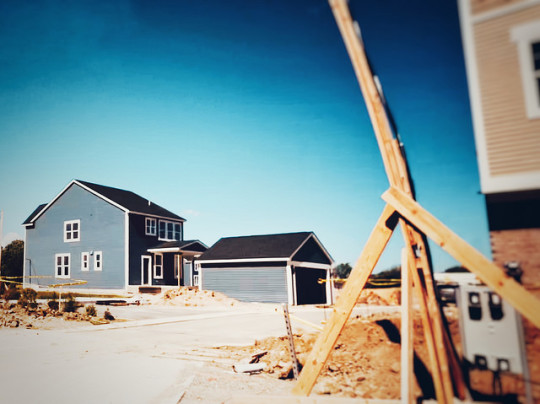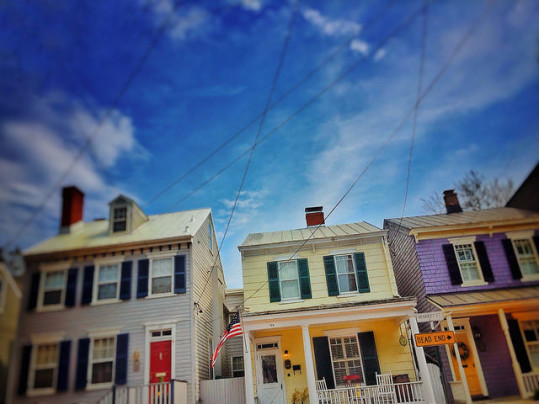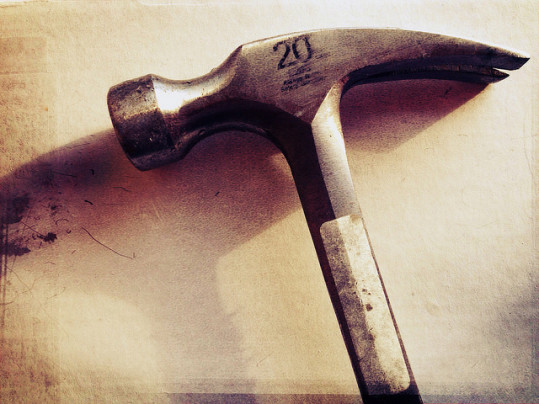The story of this year’s housing market has mostly been about inventory. With a lower number of homes for sale and high buyer demand, competition and prices have been on the rise, making conditions more challenging for home buyers. But, if the most recent Pending Home Sales Index from the National Association of Realtors is any indication, things may finally be changing. That’s because there’s an increasing number of homes being listed and some evidence that the worst is behind us. Lawrence Yun, NAR’s chief economist, says it may not be noticeable yet, but if the current inventory trend continues, relief may be on the way. “Home price growth remains swift and listings are still going under contract at a robust pace in most of the country, which indicates that even with rising inventory in many markets, demand still significantly outpaces what’s for sale,” Yun said. “However, if this trend of increasing supply continues in the months ahead, prospective buyers will hopefully begin to see more choices and softer price growth.” In some cities, year-over-year inventory was up double digits – including a 24 percent increase in Portland and similar gains in Providence, Seattle, Nashville, and San Jose. More here.
Archive for July 2018
Log And Timber Homes Increasing In Popularity
If you were asked to name a hot home design trend, you probably wouldn’t guess log homes. And yet, new data from the National Association of Home Builders shows last year’s sales of log and timber homes were 56% higher than in 2012. That’s a big jump. So what’s behind the increase? Well, for one thing, today’s log and timber homes don’t resemble what might come to mind when thinking of an old-fashioned “log cabin.” According to the NAHB, “Revenues from log and timber frame homes have risen at a faster pace than units sold over the past six years as floorplans for the homes have expanded and offerings more extravagant.” In other words, today’s log homes are bigger and more luxurious than in the past. In fact, the average log home is 2,031 square feet. Still, the popularity of the homes is impressive when considering the fact that sales last year were only 7.8 percent below the number sold in 2006, while the rest of the single-family construction industry is down 42 percent. In short, log homes have been around forever and, based on their current popularity, they aren’t going anywhere any time soon. More here.
New Home Prices Now 4.2% Lower Than Last Year
New homes are generally more expensive than existing homes. There are a couple of reasons for this. One is that everything in a new home is brand new and you’re going to pay a premium for that. This is really no different than paying more for an older home that’s recently undergone an extensive renovation. New things cost more than used things. The other reason new homes are generally higher priced is that builders, for the past several years, have been primarily building houses for the high-end of the market, due to the fact that there was more demand for new homes among luxury buyers following the housing crash. But new numbers from the U.S. Census Bureau and the Department of Housing and Urban Development should be good news for buyers who are interested in buying new but may not have a luxury-home budget. That’s because June’s new residential sales statistics show a 4.2 percent drop in the median sales price for new homes year-over-year. The median sales price is now $302,100. Surging new home sales between $200,000 and $299,000 were behind the decline, indicating an uptick in new homes available in more affordable price ranges. More here.
Mortgage Activity Mostly Flat Last Week
When the economy was struggling following the financial crisis and housing crash, interest rates were kept low to encourage economic activity. However, as the economy and job market have improved, the Fed has gradually begun to raise rates. This is part of the reason mortgage rates are higher than they were last year at this time. But, though there has been a slight upward trend, more recently, rates have been somewhat flat. Joel Kan, the Mortgage Bankers Association’s VP of economic and industry forecasting, told CNBC there’s a reason for this and it can be seen in the results of the MBA’s most recent measure of mortgage application demand. “Treasury yields were up slightly thanks to the Fed signaling more rate hikes this year, the strong economy, and low unemployment,” Kan said. “But continuing trade tensions between the U.S. and China kept Treasury rates down, which meant mortgage rates were unchanged from the week before.” In short, though the economy is strong, global economic uncertainty has been keeping rates from moving significantly higher in recent weeks. Still, despite flat rates, the MBA found demand for mortgage loans was also relatively unmoved from one week earlier. More here.
Home Buyer Must Haves Mean Compromise
Searching for a home to buy can be frustrating. Mostly because it’s not always easy to find a house in the right neighborhood with every one of the features you dreamed of. If you find the perfect kitchen, the house will have too few bedrooms. Or you’ll find a house with the right number of bedrooms and the kitchen will be too small. In other words, buying a house means compromise. And, in today’s market, buyers are having to make difficult choices. For example, a new analysis from the National Association of Realtors’ consumer website found that for 73 percent of recent buyers school district was an important factor in deciding which house to buy. But, among those buyers, nearly 80 percent said they had to give up other home features in order to find a house in their preferred district. Some of the features these buyers said they gave up included a garage, a large backyard, an updated kitchen, and an outdoor living area. In short, you might not get everything you want in one house. So prioritize your wish list and know what’s most important to you. More here.
Inventory Climbs But Not Enough To Help Sales
New numbers from the National Association of Realtors show sales of existing homes were basically flat in June and are now 2.2 percent lower than they were at the same time last year. And yet, buyer demand has been high all year. So why aren’t more homes selling? Well, according to Lawrence Yun, NAR’s chief economist, it’s because there are too few homes for sale. “The root cause is without a doubt the severe housing shortage that is not releasing its grip on the nation’s housing market,” Yun says. “What is for sale in most areas is going under contract very fast and, in many cases, has multiple offers.” In short, if there were more homes for sale, sales numbers would likely be up and prices would be coming down. That’s why it’s encouraging that the total number of homes for sale was up 4.3 percent last month and is now just slightly higher than at the same time last year. But, despite rising inventory, there still aren’t enough homes to match current buyer demand in many markets. More here.
Remodeling Index Finds Home Repairs On The Rise
Maintenance is a big part of being a homeowner. Put simply, owning a home means having a never-ending to-do list and, depending on your level of know-how, some of it will require the help of a professional. These jobs can range from major renovations such as putting an addition on your house to basic upkeep and repairs like having ducts cleaned and fixing leaks. Essentially, you are your home’s temporary caretaker and how well you take care of it will affect not only how comfortable and enjoyable your home is to live in but also how much you can ask for it when you sell. These days, it seems Americans are increasingly interested in fixing up their homes. In fact, newly released data from the National Association of Home Builders shows home remodeling contractors are busy right now. So what kind of jobs are most in demand? Well, results show demand is highest for basic maintenance and repairs, while additions and alterations – both major and minor – saw slight declines during the second quarter. In short, Americans are tackling their to-do lists and fixing up their homes. This could be due to improved economic conditions and a stronger job market, though it may also be that current homeowners are tending to their homes in hopes of listing them someday soon. More here.
